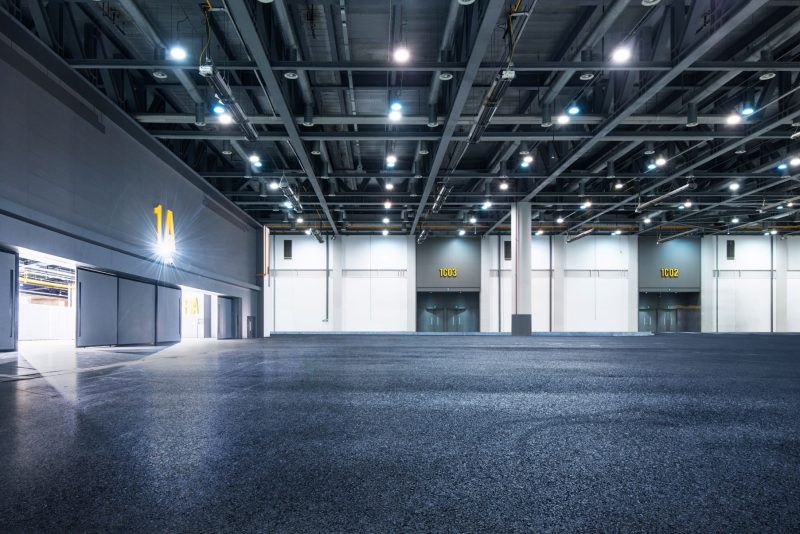Cold storage facilities will continue to present a compelling long-term investment opportunity in Asia Pacific, supported by an ability to deliver resilient and stable returns and to generate higher rental rates than other asset classes. According to JLL (NYSE: JLL), investment in Asia Pacific cold storage real estate will likely cross $2 billion between now and 2030 - compared to a $948 million high in 2021 - as investors look to diversify portfolios and take advantage of end-user demand for more specialized facilities.
Between today and 2030, JLL believes that numerous factors will drive an investment recovery in cold storage assets, where volumes have contracted from a 2021 high. Specifically, investors will be drawn to the greater stability of the sector compared to other asset classes, supported by evergreen demand for perishable goods like food and medicine housed in cold storage facilities. Additionally, attractive leasing covenants, whereby rents are typically higher than standard logistics and industrial facilities and lease terms are longer, will attract forward-thinking investors.
According to JLL analysis, transactional activity in the cold storage sector has slowed in the past 12 months. External factors including higher interest rates and subsequent rising capital costs are making real estate investments generally less attractive investment propositions across all sectors. Within the Asia Pacific cold storage sector, volumes soared for both distribution centre and cold storage in 2021 where the average price was above the historical average ($29.6 million vs $19.1 million 10-year average). Furthermore, the number of major deals reached a record 32 transactions, more than double the 15 annual deals on average over the past 10 years. Year-to-date, deal size has averaged $16.3 million.
"Investment in cold storage has cooled from 2021 but has by no means peaked. A spectrum of factors, ranging from structural changes in consumption patterns to the shift to online spending and various macroeconomic influences, will shore up this market for longer-term yet sustainable growth from a more select group of investors," says Ben Horner, Senior Director, Supply Chain & Logistics Solutions, Asia Pacific, JLL.
More recently, the higher barriers to entry into cold storage have influenced activity in the sector but will draw more specialized investors and operators to the sector. According to JLL analysis, there is a growing acceptance that cold storage investment requires a deep understanding of the unique complexities associated with temperature-controlled environments, logistics, and regulatory compliance. As a result, this operational reality can act as a competitive advantage for knowledgeable investors, while creating a deterrent to other investors.
Additionally, for the sector to meet consumer demand for both efficiency and to address global disruptions that have compromised some robust supply chains, technology investment is an increasingly important consideration for investors eyeing cold storage facilities. Advancements in automation, robotics, and energy efficiency can significantly enhance the operational efficiency of cold storage facilities and help reduce operator/occupier costs as technology improves, making them more resilient, but will ultimately favour investors with specialized experience.
The macroeconomic influence will also shape the future investment requirements of the cold storage sector in Asia Pacific. Asia Pacific's substantial middle-class population coupled with rapid economic growth and rising income levels are expected to support rising consumption levels. Private consumption in Asia Pacific rose by a robust CAGR of 4.1% between 2013 and 2022. This is forecast to accelerate to 4.7% between 2023 and 2025.
Furthermore, In Asia, revenue from grocery delivery more than doubled between 2019 and 2022, rising from $92 billion to $269 billion. Revenue is projected to increase to $453 billion by 2025, reflecting a compound annual growth rate (CAGR) of 19.1%. Concurrently, the global third-party logistics (3PL) market was valued at $556.4 billion in 2022 with Asia Pacific accounting for about one-third of the global market and forecasts to expand by a CAGR of 4.9% between 2023 and 2027, ahead of the US (2.1%) and Europe (2.2%).
In Thailand, the demand for cold storage is experiencing a notable increase, primarily driven by the country's expanding exports of agricultural and agro-processing products. This growth is a result of changing consumer behaviors and the impact of global geopolitical conflicts on supply chains.
"The Asia Pacific cold storage market is flourishing, thanks to strong demographic and macroeconomic support. As demand for cold storage increases, driven by a steady base need, these assets are not only financially rewarding but also bring a layer of stability and resilience to investment portfolios. The future of this vital asset class hinges on attracting knowledgeable investors who can spur further investment and ensure its long-term success", said Mr. Michael Glancy, Country Head, Jones Lang LaSalle (Thailand) Limited (JLL). "And as Thailand's export sector continues to evolve, the necessity for sophisticated cold storage solutions is becoming increasingly evident. These facilities are vital for maintaining the quality of perishable exports and strengthening Thailand's position in international markets."
Today Thailand's cold storage market is largely dominated by small and medium-sized enterprises (SMEs). Latest data from the Department of Business Development (DBD) shows that, out of 192 registered cold storage companies in 2022, the vast majority are SMEs, with only 12 being large-scale operators. This landscape indicates ample room for growth in the sector, especially for entities that can bring in new technological advancements and inventive business solutions. The sector's financial strength is evident from its annual revenues, which reached THB 18.3 billion in 2022. Furthermore, the existing cold storage space in Thailand, estimated at about 850,000 square meters in 2022, highlights both the current capacity and the potential for further expansion to cater to the increasing market demand.
"The rapid evolution of Thailand's cold storage sector reflects the dynamic nature of our export markets and the changing needs of global supply chains. Our focus is not only on expanding the capacity but also on incorporating advanced technologies. This approach will not only elevate the efficiency of our cold storage facilities but also ensure Thailand is at the forefront of this critical industry. The potential for growth in this sector is immense, particularly for those who are ready to innovate and adapt," said Mr. Krit Pimhataivoot, Head of Capital Markets, Jones Lang LaSalle (Thailand) Limited (JLL).
Source: Midas PR

